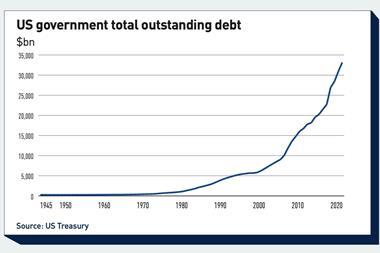The good news, says NatWest Markets of the £90m ($143.1m)loss it declared in interest rate options this February, is that no client money was involved. The bad news, say other risk managers at other London banks, is that no such assurances can be made about similar events in the future and that avoiding a repetition may be almost impossible.
While the media has focused attention on the possible failure of management controls at the bank, risk managers elsewhere have been more sympathetic: they believe NatWest, like others before it and others yet to come, fell victim to the belief that option pricing is an exact science. Those who do not acknowledge that option pricing has its subjective elements are unlikely to check them for error.
Exactly how Markets, NatWest's in-vestment banking arm, lost the mon-ey is unclear. Not only have the details not been made public, but sources at the bank say there is still a long way to go before the history of the trades res-ponsible can be unravelled. What is known is that a trader or perhaps more than one trader systematically mispriced an interest rate options position since late 1994, probably by entering inaccurate estimates of volatility into the bank's options pricing model.
One of the elements that must be considered when pricing an option is the potential variation of the asset the options is written on the volatility which must be estimated, rather than measured. In theory, volatilities should be the same whatever the option's exercise price. But extreme market events (crashes) are more common in real markets than in theory. This means volatilities for the out-of-t he- money" options struck at such extreme market levels are higher than they are for options struck at the prevailing market price ("at-the-money").
Risk managers say that there is often very little information on which to base estimates of volatility for such instruments, and that the bid/offered spreads may be so wide that it would be possible to realise a substantial loss on an option struck within the market spread. This can be true even for markets which are considered well-understood; there is no suggestion that NatWest's losses were incurred in any particularly esoteric market. In this situation, picking the "right" volatility and hence the correct price may be as much art as science.
It might seem that these are the rarefied problems of an investment bank working in a competitive and abstruse market. the numerous debacles due to derivatives over the past few years have done much to impress end-users of the pitfalls of dabbling in instruments that they cannot independently price. But the danger apparently demonstrated by NatWest's experience is that even well understood instruments in well-understood markets can lead to disaster if the market conditions are illiquid.
Out-of-the-money calls and volatility modelling may not be the stock-in-trade of many institutional investors, but there are other examples which are. For example, pension funds with long-dated liabilities, or investment funds offering long-lived retail instruments, are known to buy options going out as far as 25 years on equity indexes like the FTSE-100. Even if such options are at-the-money, the lack of historical information on a 25-year timescale means that bid-offer spreads in the market may have give little indication of the real value of that instrument: the only way to tell is to sell the position.
Sumit Paul Choudhury is technical editor of Risk Magazine."












No comments yet